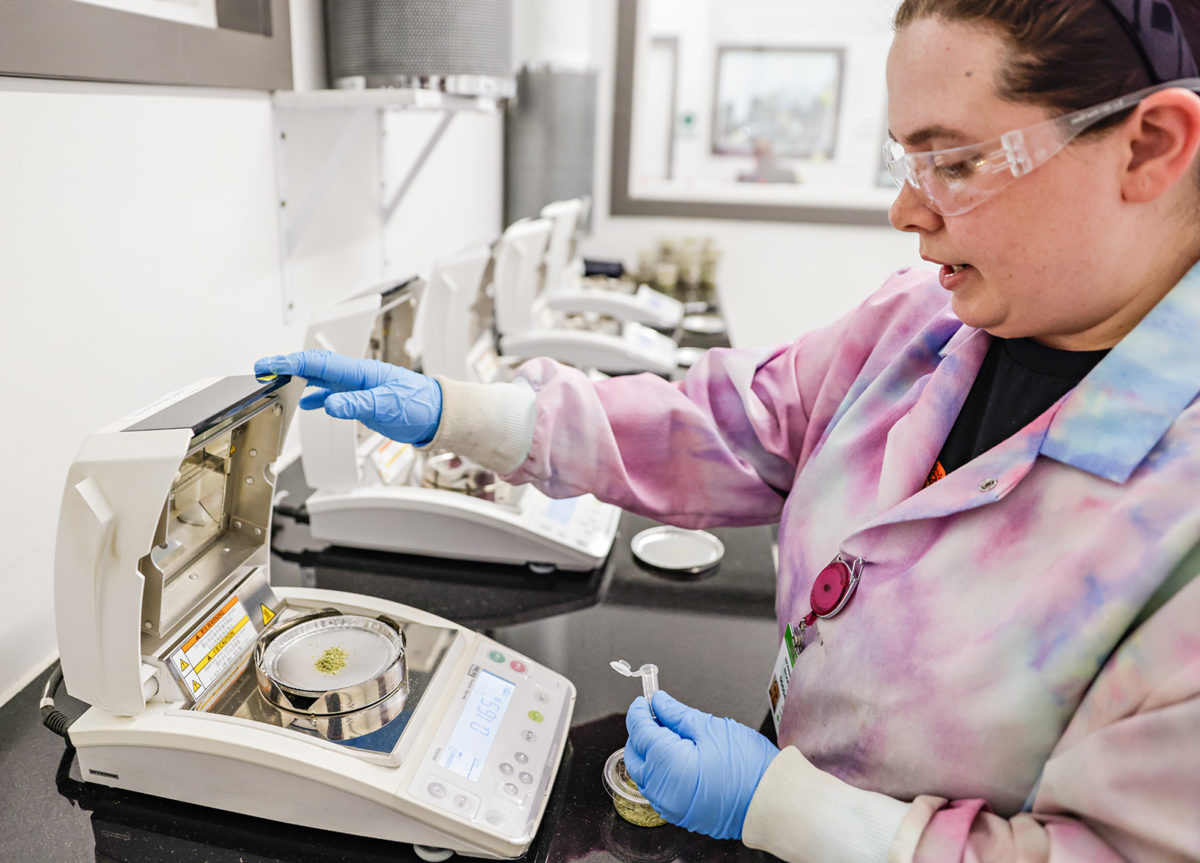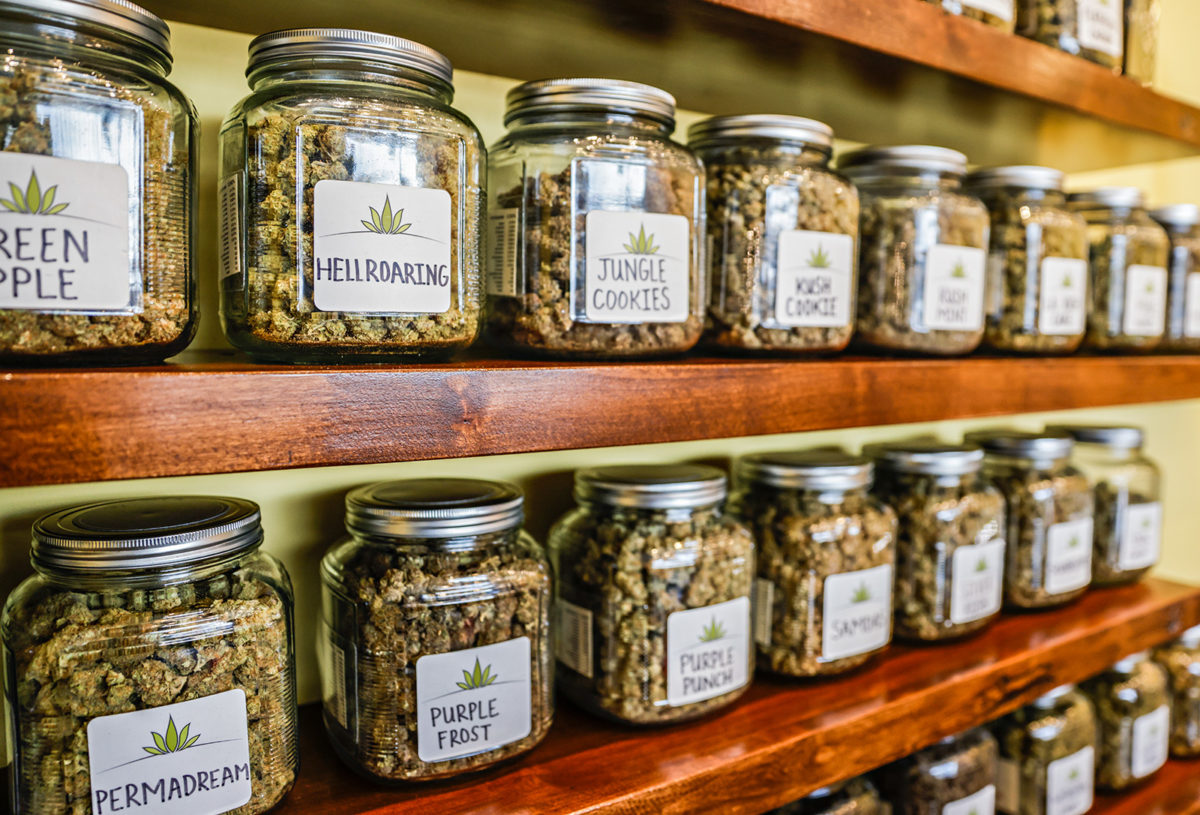A Budding Regulatory Loophole
Cannabis testing laboratories and dispensary owners say the current regulatory system allows licensees to overestimate THC potency of their product and underestimate quantities as the state works to fix problems exposed in its first year of recreational marijuana legalization
By Maggie Dresser
Last year, in anticipation of a dramatic uptick in cannabis testing leading up to the legalization of recreational adult-use marijuana sales, Stillwater Laboratories owners Ron and Kristine Brost increased the staff at their Olney facility to 30 employees to meet the predicted surge in demand.
Despite the flood of new dispensaries and the millions of dollars in sales in its first year, the Brosts say they have only seen about a 10% increase in business, and recently downsized their staff to 22 employees.
“We just haven’t seen the volume we were expecting,” Ron said.
Stillwater Laboratories is one of four in the state that is responsible for testing things like pesticides, contaminants and THC concentration in marijuana samples, working directly with dispensary licensees. Each lab is required to use Metrc, a regulatory software system that the Montana Department of Revenue Cannabis Control Division contracts with to track seed-to-sale inventory and sales.
After comparing test numbers and year-to-date sales, which the state estimates at more than $200 million since legalization took effect, and a roughly 200% increase in sales, Ron says the numbers don’t add up; conversely, testing at his lab has barely changed since Jan. 1.
The state requires labs to verify a licensee’s total weight of their product in Metrc, but Kristine says that becomes problematic because they don’t have access to that information.

“We can’t actually verify in Metrc what their total weight is,” Kristine said. “All we can verify is what they show us.”
The reason Stillwater Laboratories didn’t see the spike in business that they expected is because licensees are only testing small samples of their batches.
For example, the Brosts are supposed to test five-pound lots, but their clients often only send them a fraction of that size, which applies to an entire harvest that can be as much as 50 pounds.
“We’re completely blind, yet we as a laboratory are responsible for certifying that whole batch,” Ron said.
The Brosts blame the Metrc software for this loophole, and it allows untested product to be put on dispensary shelves.
“We aren’t regulators,” Kristine said. “We’re not part of the state — we are an independent business but all of the rules that they make us follow are at odds with what the licensees would like to happen. We are in a position where our licensees want one thing, and the state says we have to do something else.”
At Tamarack Cannabis south of Whitefish, owner Erin Bolster has been in business since 2009 and she sold to medical marijuana cardholders before adult use became legal in January. She says testing protocols have changed, which makes the process take longer.
“The state is treating the labs as regulators and they are not regulators,” Bolster said. “They are relying on testing labs to catch inaccuracies, but the problem is testing labs and dispensaries have a financial relationship. It’s not good to be regulating your own customers.”
On the state level, Cannabis Control Division Administrator Kristan Barbour says the department is working with a limited budget while working out kinks with the transfer of the industry from the Montana Department of Health and Human Services (DPHHS), which historically oversaw state regulations surrounding the sale of medical marijuana, to the Department of Revenue, which now handles adult-use recreational cannabis.
“The system isn’t designed to be regulatory, it’s just tracking the movement of inventory, the plant and the product,” Barbour said. “I think it meets what it’s designed for … I’m sure everyone has their own opinion, but for our purposes, I would say we’re satisfied.”
Bolster says the transfer from the DPHHS to the Department of Revenue has gone smooth since they are better suited to deal with the regulatory aspects of the industry, but she would like to see the lab testing also fall under that program. Testing is still the responsibility of DPHHS, but there is currently draft legislation in the works that would transfer testing to the Department of Revenue.
“There’s been a challenge with the department of health and the Department of Revenue on how they will be tested so there’s no cheating going on,” Bolster said. “That’s the big concern with providers.”
In addition to submitting fewer quantities of cannabis than what’s required, some licensees are also presenting their highest-quality samples to the lab, which isn’t representative of the entire batch.
The Brosts believe some licensees cherry pick their best buds, which may only account for a small portion of a batch, to send to the lab for testing. The results sometimes have 30-40% THC concentration, which Ron says is a suspiciously high percentage to label an entire batch. By comparison, the THC concentration in a marijuana plant grown back in the 1970s would probably be about 2%, Ron said.
“If you have 42% material, you wouldn’t be in Montana, you’d probably be in California selling your stuff and you’d be a billionaire,” Ron said. “Snoop Dogg would be your best friend.”
Bolster says many customers choose products based on potency, but she’s working to educate her clients and explain that they shouldn’t necessarily choose products based on the THC percentage.
“You can harvest a whole room of the same plants and some will come back higher and some will come back lower,” Bolster said. “We’re doing a lot of consumer education.”

To solve testing issues, Bolster says there needs to be more state inspectors involved in the regulatory process. Currently, there is one inspector that covers five counties and more than 150 businesses that likely only sees each dispensary about once per year.
Barbour, at the Cannabis Control Division, says the department launched with a small budget and staff and acknowledged that improvements need to be made.
“I think we’ve had a good relationship with the industry, and we want to be supportive,” Barbour said. “We are going into the next year and there will definitely be legislative changes that start in January.”